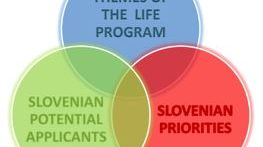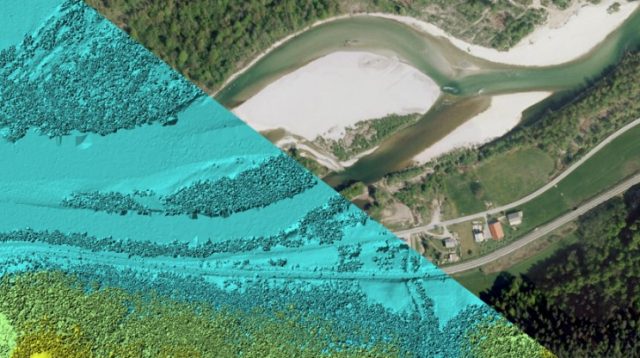Expert Tasks in the Implementation of Slovenian Flood Risk Regulations
Amendment and supplementation of the flood warning map
The Flood Warning Map (OPKp) and its role are set out in the Rules on Methodology to Define Flood Risk Areas and Erosion Areas Connected to Floods and Classification of Plots into Risk Classes (Official Gazette of the RS, No. 60/2007).
One of the basic purposes of the OPKp is to aggregate all available data on floodplains. Its contents are updated and supplemented in line with available data and financial resources, while the presentation is suitable for map scales of 1:50,000 and less accurate.
The goal of publishing a layer is to alert spatial planners and other publics of the danger of flooding.
The following orientations and baselines were used:
1. from sources where multiple lines of floods of varying return periods were available, the one having the largest floodplain was chosen;
2. there is one flooding area. The categories of frequent, not frequent and not very frequent floods are combined into a single flood layer (as per the Client);
3. each polygon is equipped with the attributes category of frequency and a reliability assessment;
4. flood areas where the watercourse was excluded from the source were combined into a single polygon.
The content of OPKp2012 November includes:
1. Flood warning map (flooding areas)
2. Flood warning map (flooding direction)
3. Flood warning map (flooding section of the watercourse)
4. Flood events
5. Functional inundation areas
Sources
Data used to update the OPKp has been collected from various sources, is of varying accuracy and is in different formats (cartographic, digital) and temporal distances. The graphics are from:
1. OPKp2007;
2. OPKp2012 February;
3. flood events recorded in the near and distant past (lines of floodswere set using the actual flood events);
4. models (lines of floods were set using hydrology and hydraulics);
5. other (various sources, e.g. Ujma magazine, Acta geographica Slovenica, etc.)
The shown flooding areas include only flood areas for which data was available that could be integrated in the OPKp layers within the allotted time.
This is why: If an area is NOT marked as a flood area, this DOES NOT mean there is NO risk of flooding in that area.
The layers can be changed occasionally if obvious errors are discovered and considered, or if additional information is found leading to the identification of additional (changed) flooding areas or to changing the accuracy of the floodplains of the previously shown flooded areas and water levels.
The accuracy of the presentation varies widely in terms of space according to the source of data, though it does follow the general map scale accuracy of 1:50,000. Sources are of varying accuracy and in different formats (cartographic, digital) and temporal distances and include flood events recorded in the near and distant past, results of hydraulic models, publications, etc.
RELIABILITY ASSESSMENT: 1 … least, 10 … most reliable presentation, which includes both reliability of content and data capture accuracy.
The level of reliability is an expert’s assessment:
1–4 familiarity with the area, some data on flooding is of varying quality, temporally distant data;
5–6 better familiarity with the area, some data on flooding is of higher quality, temporally closer data, hydrological data, simplified hydraulic calculations;
7–8 better familiarity with the area, data on flooding is of higher quality – records of events, temporally closer data, better hydrological data, temporally distant hydraulic calculations;
9–10 close familiarity with the area, good data on flooding – events are recorded and analysed, temporally closer data, good hydrological data, temporally closer hydraulic calculations made using modern tools, etc.
The content available in the Environmental Atlas (OPKp 2007):
1. Flood warning map (frequent)
2. Flood warning map (not frequent)
3. Flood warning map (not very frequent)
4. Flood warning map (direction)
5. Flood line (N.B.: the sections of the watercourse that are flooding)
6. Flood events
was replaced with the following content (layers) in OPKp 2012 November:
1. Flood warning map (flooding areas)
2. Flood warning map (flooding direction)
3. Flood warning map (flooding section of the watercourse)
4. Flood events (defined by date)
5. Functional inundation areas
The data layer was amended and submitted to the Ministry of Agriculture and the Environment for validation, after which it is to be submitted to the Slovenian Environment Agency to be published in the Environmental Atlas.
Keywords
About the Project
Value of the Project
24000 EUR




